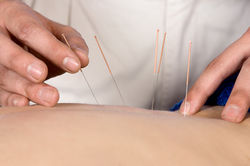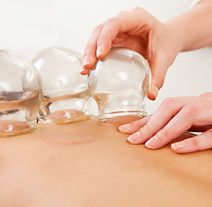Acupuncture
 |  |  |
|---|---|---|
 |  |
Does acupuncture work?
NICE (The National Institute for Health and Care Excellence) recommends acupuncture for pain management.
In ‘The Acupuncture Evidence Project A Comparative Literature Review The Acupuncture Evidence Project: Plain English Summary Bottom Line’ by Mcdonald and Janz (2017), there were 2189 recommendations made based on medical evidence.
Total conditions reviewed- 122 conditions
-
Strong Evidence of effect - 8 conditions
-
Moderate Evidence of effect -38 conditions
-
Mixed evidence - 71 conditions
-
Total conditions with some evidence of effect (any level) - 117 conditions
You can read factsheets about the latest acupuncture research at www.acupuncture.org.uk
Is acupuncture safe?
Several studies on the safety of acupuncture involving over 10.5 million treatments demonstrated that acupuncture is one of the safest forms of medical treatment. The most common side-effects reported included minor bleeding or bruising, tiredness and temporary aggravation of symptoms.
Acupuncture is only safe if administered by a fully qualified acupuncturist. World Health Organization (WHO) recommends a minimum of 2,500 hours of formal training to qualify as an acupuncturist. Therefore, the onus is on patients to verify how well trained their acupuncturist is.
Angela Dougal holds UK Bachelor's in Science degree qualifications after undertaking three years of formal training in London South Bank University. She is registered with The British Acupuncture Council and is accredited by The Professional Standards Authority.
We order only single-use needles
We use sterile single-use high quality acupuncture needles that are disposed of immediately after each use. This significantly reduces the risk of infection.
Does acupuncture hurt?
Acupuncture needles are so thin you will barely feel them penetrating the skin. Once inserted, we may adjust the needle until you feel a slight ache or tingling sensation. This sensation is a sign that we've activated the acupuncture point. Research shows that it's this sensation that induces physiological changes in the body.
That sensation shouldn't be uncomfortable and should settle within few seconds. If you feel any discomfort during your treatment, please tell your acupuncturist who will adjust the needle to make it more comfortable.

What happens during the initial acupuncture appointment?
Getting to know you and your main health concern (or concerns) is a vital part in the process of ensuring your treatment is completely tailored to what’s important.
Prior to the treatment, you will receive an email with the intake form, a consent form, and recommendations for your first treatment. You need to complete the intake form and send it to us back. (online) This will allow us to focus more on the treatment specifically tailored for you. You will have to sign a consent form in the clinic because cannot proceed without a signed consent form.
Medical history
-
The first appointment for acupuncture is generally 1.5 hrs long and is designed to map a comprehensive and clear picture of your health, what’s brought you here and what you’d like to achieve.
-
This involves asking questions about your current symptoms and your medical history, as well as such things as your sleeping pattern, your appetite and digestion, and your emotional wellbeing. Women are also asked about their menstrual cycle and any past pregnancies and childbirth.
-
You might feel that some questions appear unrelated to your condition, but the information you give helps to form a more complete picture of your health and lifestyle.
Examination and diagnosis
-
The examination undertaken with depend on your presenting conditions: we may assess your posture, muscle, or joints, also examining for areas of muscular tension or pain.
-
Your pulse on both wrists will be taken to check quality, rhythm, and strength along with observation of your tongue to assess physical health. These are very valuable techniques used by acupuncturists to confirm a diagnosis.
-
Once a clear picture of your health and goals is formed, a specific acupuncture treatment plan will be formulated just for you and in agreement with you.
-
The treatment plan will have your overall goals at its core.
Treatment
-
You may be asked to remove some of your outer clothing. To preserve your modesty, only the areas of the body being treated are exposed during the treatment and paper towel may be offered for your comfort.
-
You will usually be asked to lie down om a treatment couch, but acupuncture can be administered with you sitting up, if required.
-
When you are comfortable on the treatment couch, ultra-fine needles are placed at specific acupuncture points.
-
The acupuncture needles are left in typically between 20 and 30 minutes – the length of time depends on what is being treated and your overall condition.
-
Depending on your condition, other techniques may also be used (electro-acupuncture, heat lamp, cupping, etc)
-
The vast majority of people find acupuncture relaxing and often feel very calm after a treatment. Many people fall asleep during treatment. You may feel a little tired or sleepy and should take this into account if you are planning to drive or use heavy machinery straight after your treatment
-
You should refrain from vigorous exercise after treatment and, ideally, give yourself a little time to rest. Try not to drink alcohol for several hours before and after treatment
-
Acupuncture has very few side effects and any that do occur are usually mild and self-correcting. Cupping can sometimes temporarily mark the skin. Any marks are normally painless and generally clear within a few days.
-
Follow up treatments, if needed, last 45 minutes.
-
Lifestyle & dietary advice along with self-help exercises are commonly given after treatment and many patients find this extremely helpful.
-
Your treatment is kept under continual review by your practitioner to ensure your health goals are being met. If Angela feels it necessary, she will suggest (or refer you to) other health practitioners.
Acupuncture treatment may involve the use of
supplementary techniques.
Electro-acupuncture

Electro- acupuncture enhances the effect of manual acupuncture and is particularly effective in the treating pain. It has also been shown to improve blood flow to the ovaries and the uterus, which is useful in fertility and IVF patients. During Electro- acupuncture
Small electrical pulses are passed through the needles into acupuncture points. Patients usually experience a slight pulsation sensation. It is not painful, in fact most patients really enjoy electro-acupuncture.
Cupping

Cupping is where the air is removed from a cup and it is then placed on the patient’s skin. This vacuum effect pulls on the skin, thus generating an effect similar to acupressure. Cupping is completely painless but can leave temporary circular marks where the cups were applied. Cupping is often used to shift congestion and can have a beneficial effect in respiratory conditions such as cough, flu or bronchitis. It can also improve muscular pain.
Heat, moxibustion

For some conditions acupuncture’s effect can be enhanced by heating the points. For larger areas I use an infra-red heat-lamp. Individual points are heated with moxa (mugwort herb), a technique where the herb is burned near a point (without touching the skin).
Auricular acupuncture

Auricular (ear) acupuncture is where acupuncture points on the ear are treated to help relieve symptoms. There are over 200 acupuncture points on the ear. These can be stimulated with small needles or magnetic or herbal seeds. These needles or seeds can be left in place for up to several days in order to stimulate acupuncture points for longer.
Acupressure

Acupressure is where acupuncture points are stimulated by finger pressure. Acupressure is particularly suitable for people who would like to have acupuncture without needles. Acupressure can also be used on babies and children.
